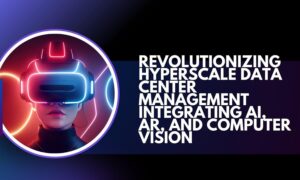Imagine driving down the highway, surrounded by futuristic holographic displays that seamlessly merge with your physical surroundings. With a wave of your hand, you can access real-time information about traffic conditions, receive personalized navigation guidance, and even interact with virtual objects that appear right before your eyes. This may sound like something straight out of a science fiction movie, but thanks to the incredible advancements in augmented reality (AR) technology, this remarkable vision is becoming a tangible reality. In this blog post, we will delve into the exciting world of AR in cars and explore its extraordinary potential to revolutionize our driving experience. Buckle up as we embark on an exhilarating journey from sci-fi to reality!
Introduction to Augmented Reality (AR) and its Potential in Automotive Vehicles
Augmented reality (AR) is a technology that allows users to superimpose computer-generated images on top of their view of the real world. In other words, it enables digital information to be overlaid with the physical world. This can be done in real-time and with great accuracy, making AR an incredibly powerful tool.
One potential use case for AR in automotive vehicles is for navigation purposes. For example, imagine being able to see turn-by-turn directions projected onto your windshield as you’re driving. This would allow you to keep your eyes on the road while still getting the information you need to reach your destination safely.
Another potential use case for AR in automotive vehicles is for maintenance and repair purposes. For example, imagine being able to see a digital overlay of your vehicle’s engine parts as you’re working on it. This would allow you to more easily identify and fix problems, potentially saving you time and money.
AR has the potential to revolutionize the automotive industry by making cars smarter, safer, and more efficient. We are only beginning to scratch the surface of what’s possible with this technology, so it will be exciting to see what comes next in this rapidly evolving field.
Benefits of AR in Cars
AR can provide a number of benefits when used in cars, from helping with navigation to providing information about the surrounding area.
One of the most obvious benefits of AR in cars is its potential to help with navigation. By overlaying directions and information about the surrounding area onto the windshield, drivers would be able to easily find their way to their destination. This could be especially helpful for those who are visiting an unfamiliar area.
In addition to navigation, AR could also be used to provide information about the surrounding area. For example, if a driver is approaching a school zone, an AR display could show the current speed limit and remind the driver to slow down. This type of information could be useful for avoiding accidents or getting pulled over.
AR has the potential to improve safety and efficiency when driving. By providing assistance with navigation and giving drivers access to relevant information about their surroundings, AR can help make driving a less stressful and more enjoyable experience.
Enhancing Navigation
The use of Augmented Reality (AR) in cars is still in its infancy, but there are a number of potential applications that could enhance the driving experience. One area where AR could be particularly useful is navigation.
Most car navigation systems today rely on 2D maps that can be difficult to read while driving. AR could provide a more immersive and intuitive navigation experience by overlaying turn-by-turn directions onto the real-world view through the windshield. This would allow drivers to keep their eyes on the road while still getting clear visual cues about when and where to turn.
Another potential application for AR in cars is destination search. Rather than scrolling through lists of possible destinations, drivers could simply point their phone or other AR device at a building or landmark and see information about nearby businesses and attractions. This would make it easy to find a gas station, restaurant, or other desired location without taking your eyes off the road.
As AR technology continues to develop, we will likely see more and more innovative applications for it in cars. For now, enhanced navigation is just one example of how AR has the potential to improve the driving experience.
Improving Safety
There are many potential applications for augmented reality in cars that can improve safety for drivers, passengers, and pedestrians. For example, AR can be used to display real-time information about the car’s surroundings, such as traffic conditions, weather, and construction zones. This would allow drivers to make better decisions about route planning and avoid potential hazards.
AR can also be used inside the car to provide driver assistance. For example, the navigation system could display turn-by-turn directions directly in the driver’s field of view, instead of on a separate screen. This would allow the driver to keep their eyes on the road while following directions. Additionally, AR could be used to highlight objects or features in the car that the driver may not be aware of, such as a child safety lock on the back seat door.
AR can be used to improve communication between drivers and pedestrians. For example, an AR system could display a virtual crosswalk at an intersection where there is no physical crosswalk present. This would help pedestrians crossing the street to be more visible to drivers and reduce the risk of accidents.
Providing an Enhanced Driving Experience
The potential for augmented reality in cars is huge. By providing an enhanced driving experience, augmented reality can help drivers stay safe and improve their driving skills. Here are some ways that augmented reality can provide an enhanced driving experience:
- Augmented reality can help drivers avoid accidents by providing real-time information about their surroundings.
- It can help drivers navigate unfamiliar territory by providing turn-by-turn directions.
- Augmented reality helps drivers find parking spots by showing them available spots in real-time.
- Helps drivers stay aware of their speed and location by displaying relevant information on the windshield.
- Augmented reality can entertain passengers with interactive games and other content during long car rides.
Challenges Facing the Adoption of AR in Cars
The potential for augmented reality (AR) in cars is vast, but there are several challenges that need to be overcome before we can see widespread adoption.
Cost: The hardware and software required for AR applications can be expensive, and many car manufacturers are unwilling to invest the money necessary to integrate AR into their vehicles.
Complexity: AR systems are complex and require a high degree of accuracy and precision to work properly. This can be difficult to achieve in a moving vehicle, where vibration and other factors can interfere with the system’s performance.
Safety: There are concerns that AR systems could distract drivers and lead to accidents. In order to be adopted, AR systems will need to be proven safe for use in cars.
Regulation: Currently, there are no regulations governing the use of AR in cars, so it is unclear how such systems would be controlled or monitored. This could limit the adoption of AR in cars until regulations are put in place.
Examples of Companies Utilizing AR in Cars
Ford – In 2015, Ford announced that it would be working with Microsoft to create an augmented reality headset for use in its vehicles. The headset, known as the HoloLens, will be used to provide information to drivers about their surroundings and potential hazards.
Mercedes-Benz – In 2016, Mercedes-Benz announced that it would be using augmented reality to help sell its cars. The company created an app called “The Augmented Reality Showroom” which allows users to see what a car would look like in their driveway before they buy it.
Volvo – In 2017, Volvo announced that it would be using AR to help customers customize their cars. Customers will be able to use an app to see how different colors and options would look on their cars before they make a purchase.
Audi – Audi has been experimenting with augmented reality for a few years now and has even created an AR car configurator that allows customers to see how different cars would look with different paint colors and wheels.
Possible Future Applications of AR in Cars
It is still early days for augmented reality (AR) in cars, but the potential applications are many and varied. Here are just a few of the possible future applications of AR in cars:
- AR could be used to provide real-time information about the car’s surroundings, such as traffic conditions, weather conditions, and so on.
- It could be used to display navigation information in a more intuitive way, superimposing directions and routing information onto the real-world view seen through the windshield.
- Could be used to enhance the driver’s view of the car’s instrumentation, making it easier to read and understand at a glance.
- AR could also be used by passengers to access infotainment content in a more immersive way, for example by watching movies or playing games with virtual objects appearing in the real world around them.
- AR could have a range of uses in autonomous cars, from providing information about the car’s current status and position to helping passengers feel safer and more comfortable while being transported by a self-driving car.
Conclusion
Augmented reality technology is quickly evolving and becoming an invaluable tool in the automotive industry. It has become a powerful asset for car manufacturers, as it allows drivers to access essential information faster than ever before. From heads-up displays to interactive navigation systems, augmented reality can provide increased safety and convenience while driving. As AR continues to develop and expand its capabilities, we are sure to see even more innovative features being added to cars all over the world.



































